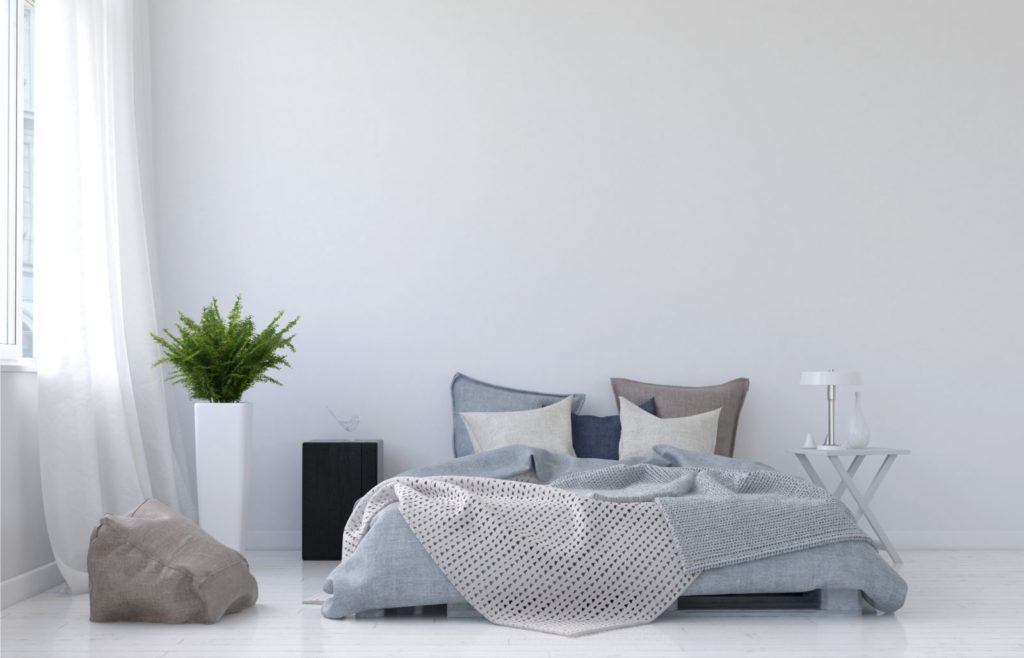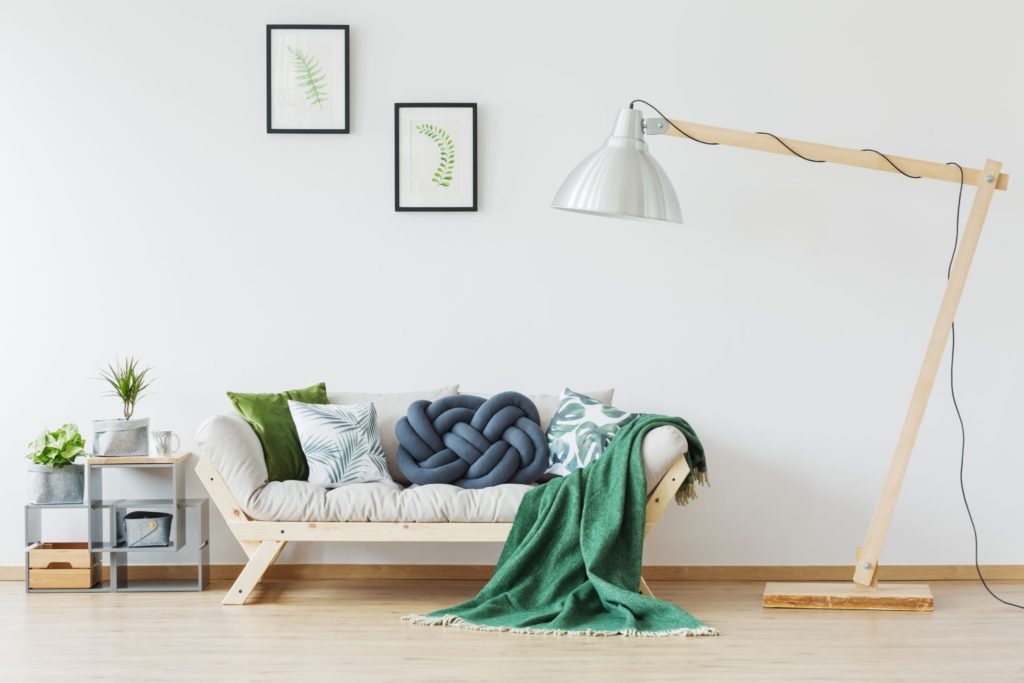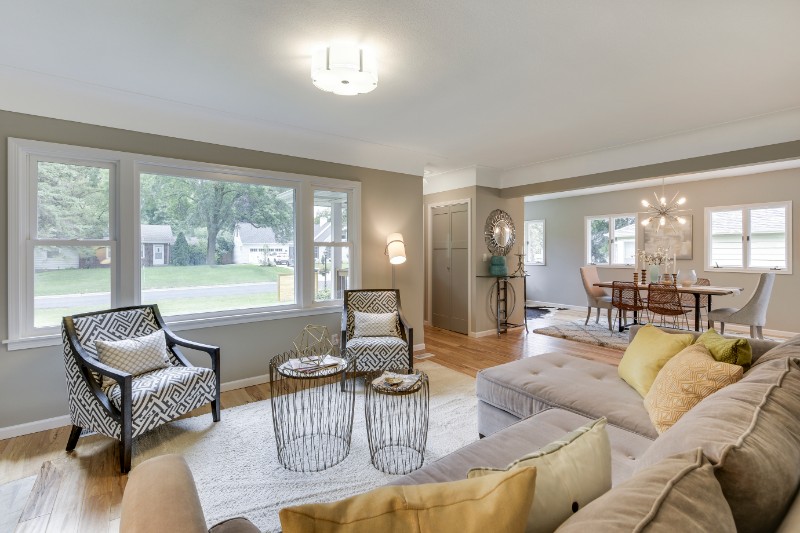Minimalist family homes are a trend that is resurfacing. Minimalist interior (and exterior) design started in the 20th century as a reaction to traditional and classical design elements. Designers from all fields began embracing clean, simple design. Not only homes, but cars, electronics, architecture, fashion design and more became more streamlined and sexy. A trend that continues in marketing and almost all the things that we appreciate today. Minimalism is right in your pocket or purse starting with your iPhone or smartphone device – the essence of streamlined minimalism.
In a nutshell, its design is stripped down to its essential purpose and identity by eliminating everything unnecessary. This pared-down aesthetic exemplifies simplicity at its best.

What’s your take?
What do you think of when you hear the word minimalism? Stark, cold and boring? Simple, sleek and sexy? Regardless of how you view minimalist interior design, there’s much more to the concept of the minimalist family and home than you think. Functionality and mental health being the top contenders.
A clean home is a happy home.
So let’s dive into the theory of “less is more”. It can be difficult to not view minimalism as a plain white box, a lucite table for four legs or cool ultramodern space. It can be done right and is a concept that can simultaneously showcase exceptional functional design while artistically creating a simplified way to live.
Why Minimalism Works
Minimalism (in my opinion) looks great. The benefits of the minimalist family are abound. A couple of initial things to think about in the minimalist family home design are:
Clean space
The first great benefit is an uncluttered clean space. This is known to increase our happiness and our health. Our physical health is directly linked to our mental health. Have you heard the phrase “a clean home is a happy home”? You can probably reflect on times when not being able to find something easily. This is a surefire way to dampen any mood and increase stress unnecessarily.
In another article, “Decorating your home is good for your mental health“, we talk about the connection in mental health and interior design.
Functional purpose
Next, having something streamlined and designated for one purpose (like your iPhone in your pocket) is essential to personal organization, planning, efficiency, and comfort. Placing interior design elements without all the bells and whistles and including multi-functional purposes we have grown accustomed to creates a neat, fluid and relaxing environment.
The Appearance of more space
Another benefit that you’ll find obvious is that streamlined furniture gives you more space, even in the smallest rooms in your house. Pair this design style with a calm palette or limited color choice to can make your rooms feel more serene and less chaotic.
And obviously… less of everything means a bit more money in your pocket.
Embrace Minimalism
Even if you are a traditionalist or just inherently a saver, and love your curves, frills, bells, and whistles, you can embrace some tenets of the minimalist family for a happy and healthy home. Consider this…
Streamline your furniture
Take inventory of your furniture. Do you need every piece of furniture in each room of the house? You probably have lonely, unpaired pieces of furniture sitting the corners of rooms waiting for your guests that never get invited over. Remove them.
Is your coffee table or bedside table huge? Try replacing them with smaller ones. Every piece of furniture that you remove or downsize will open up space in your home.
Simplify color schemes
Walk your home and take notice of your “stuff”. Look at everything. This includes accessories, artwork, rugs, window treatments, and even furniture. How many different colors are there in your home? I’ll bet you didn’t even realize…
Simplify your color scheme by eliminating extraneous colors and keeping it to two or three. You can try layering the same color in different textured pieces. An example of this might be putting blue textured pillows on a dark blue flat couch. Or, if you already have a neutral room, add a pop of color for an artistic focal point.

Declutter
The theme here is to declutter, focus on mental health and happiness and reclaim your living space.
Who couldn’t use a little decluttering in their life? Living in a clean and clear space isn’t just minimalist, it’s healthy for you and healthy for your family. If you have accessories or other objects lying around that are just gathering dust, consider donating them to an organization that can use them.
The same concept should carry throughout the house. Do you work from home or have a desk? Is it organized and easy to navigate? Does it make you break a sweat when you look at the mountains of paperwork and random things haven’t found a home yet? The same also goes for old photos and picture frames. Rather than adding family photo after family photo to a hallway wall, try consolidating them into a single beautiful gallery display or if you’re more inclined to leverage technology then use a digital frame to showcase them all.
Decluttering instantly breathes new life into you and your home.
Focus on function
Lastly, put your focus on function. So, if your home is tied to your mental health and your mental health is tied to your physical health. You might not realize it, but having disjointed wall art or overdone window treatments don’t necessarily enhance the function of your space – they actually distract from it.
That’s not to say that you can’t create an artistic feature in a minimalist room. Just do it with a piece that adds to the function, such as a beautiful light fixture above an empty dining table, or a brightly colored piece of furniture. When subscribing to being a minimalist family or home, as yourself this… “Does this piece contribute to the functionality of the home or am I just buying some random thing because”?
Balance in everything
Minimalist spaces offer balance and simplified beauty. It’s not for everyone – we will agree. But if you are seeking a healthy, less chaotic and aesthetically peaceful home, then embracing a minimalist design will be a crucial element to better living.
We’ve also talked in the past about making your bedroom a sanctuary, which subscribes to the minimalist family/home lifestyle. Sleep is so important and many of our living choices naturally lead to mental health issues, such as messy bedrooms, cluttered closets and living in noisy, polluted city areas.
For more reading on this, check out “Top tips on how to get your beauty sleep“.

